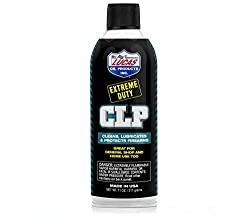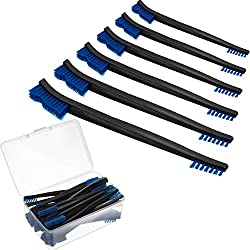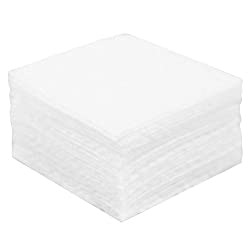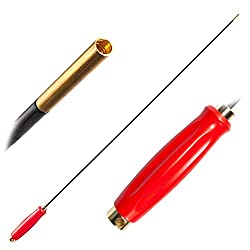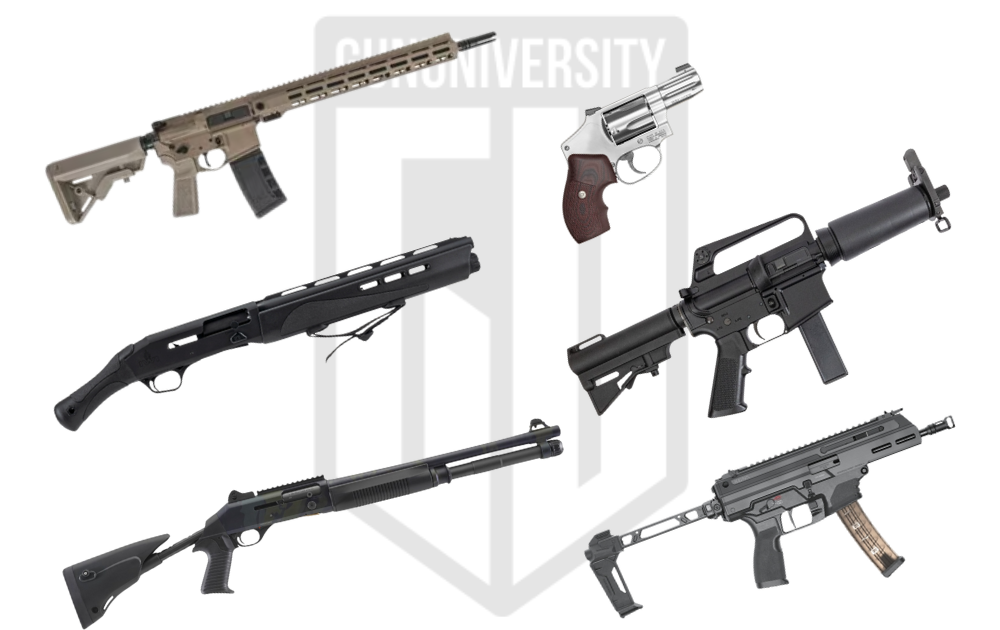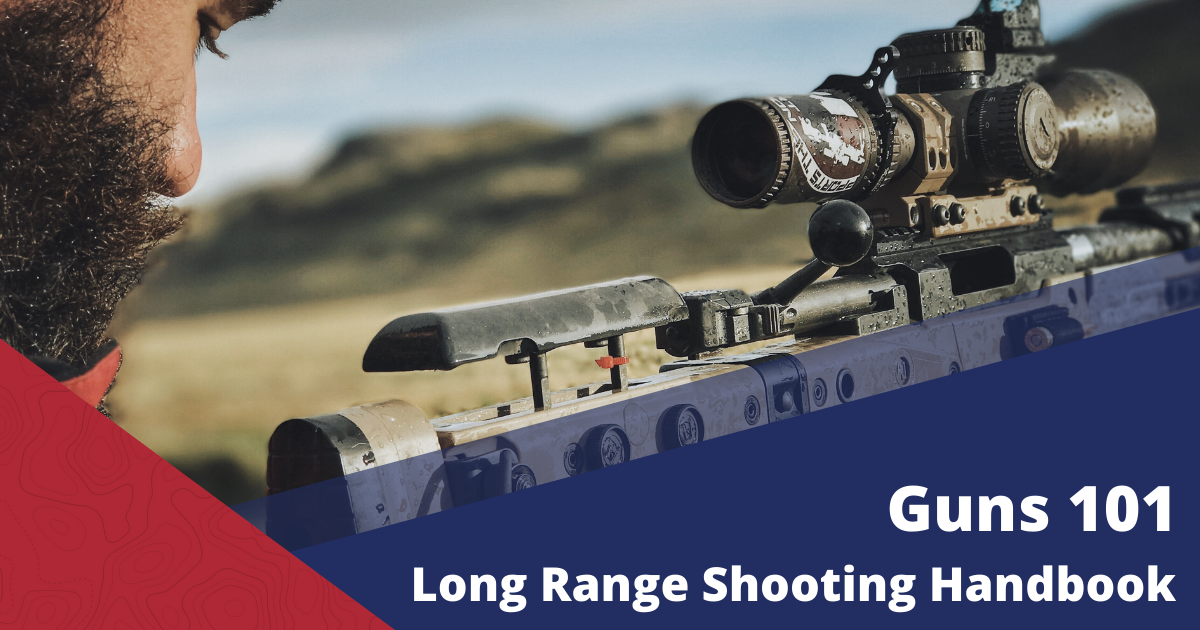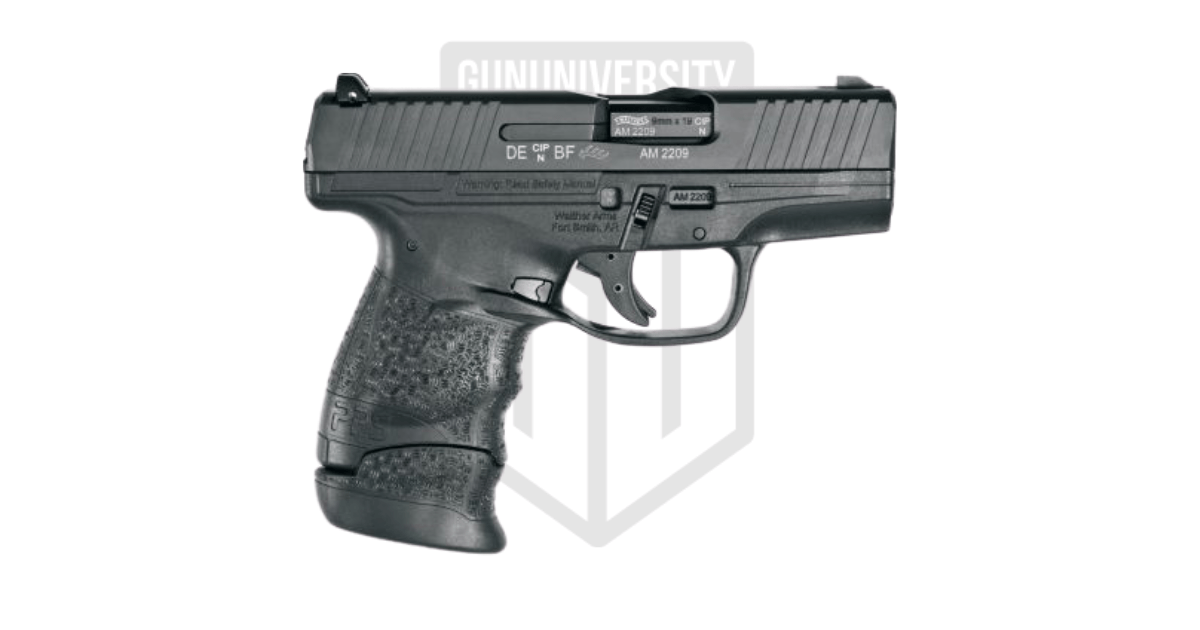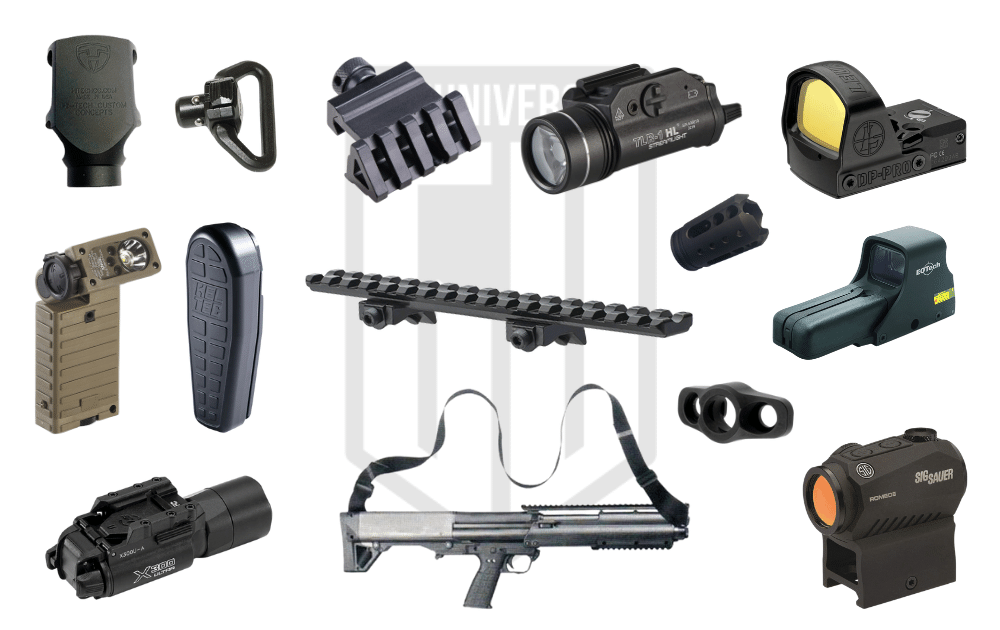How to Clean a 22LR Bolt Action Rifle: Gun Maintenance 101
How often do you clean your rimfire rifles? Do you know how to clean a 22LR rifle? Do you clean them as often as you do your centerfire rifles? Most people that I know would answer in the negative on that. My suspicion is that it has something to do with barrel life subconsciously.
Rimfire rifle barrels will most likely last a lifetime, assuming the average person’s usage. Because of this, I believe most folks don’t consider cleaning these guns very often, and that can be a mistake. Today, I’m going to talk about cleaning a 22LR rimfire bolt action.
Let’s get into it.
When You Should Clean Your 22LR
Rimfire 22LR rifles are known to be dirty. The velocity of the bullets and the pressures experienced down the barrel are respectively lower than that of most centerfire rifles–subsonic vs. supersonic. Because of these things, the barrel on your rimfire will need to be cleaned at a greater frequency than your centerfire rifle.
Long gone are the days when you had to come home from the range and immediately clean your rifle in order to avoid the icy stare and rude comments from your grandfather about cleaning and maintaining your guns.
In my experience, most shooters would agree that centerfire rifles don’t need to be cleaned until accuracy degrades–typically in the range of 300-500 rounds.
This is not the case with 22LR rimfire guns. Rimfire rifles should be cleaned on a schedule in my opinion. You want to mitigate any issues that could arise prior to said issues arising. Again, 22 long rifles are slow and dirty. You need to clean them more often.
Required Materials for Cleaning
Before we hop into some procedural content, you’re going to need to prep your workspace with the right tools and supplies. Here are some of our top recommendations to make cleaning your 22LR bolt action simpler:
Lucas Oil CLP
We highly recommend the Lucas Oil CLP carbon cleaner. It breaks up carbon, and cleans very well. It also has an oil mixed in that really negates the need for a separate oil product for lubrication.
Nylon Brushes and Picks
The theme I want you to see for these next couple of bullet points is the word “Nylon.” It is very important to never use steel brushes on the rifle chamber, breach face, or muzzle crown of your barrel. Even minimal damage to these areas can cause accuracy to degrade. Nylon picks and brushes will not damage the metal surfaces, but will give you what you need to scrape built-up carbon off of those surfaces.
Cleaning Patches
Cleaning patches are usually cotton cloth cut to specific sizes. For example, one inch square patches are just about the right size to fit down most .22 caliber barrels. I personally have found it a little easier to push these patches through the barrel when I cut my patches ever so slightly smaller. These can be purchased in bulk from nearly any firearms accessory store or Amazon.
Gun Oil
Gun oil is on the list in case you decide that you would rather use a straight carbon cleaner with no additives in it. If this is the case, then you will need a good gun oil to re-lubricate the metal-to-metal contact surfaces in your gun. The carbon cleaner typically strips all this oil off during initial cleaning. It is recommenced to check the owner’s manual, that was supplied with your rifle, for any specific procedures related to lubrication.
Cleaning Rod
You will need a cleaning rod that is longer than your barrel and action combined and is the appropriate size for your specific caliber. In this case .22 caliber. In addition to that you will need a jag that matches the threading on the end of your cleaning rod, and also is the appropriate caliber size to match your barrel. I also highly recommend a bore guide, which will keep your jag and rod centered in line with your barrel. You don’t want to damage the action or breach face remember?
Canned Air
One final thing that can come in handy for removing those troublesome bits of carbon and dirt is canned air. You can use it to blow out the action, trigger area, and bolt.
These are just the essentials you’ll need. But that doesn’t mean these are the catch all supplies when it comes to cleaning all of your guns. If you’re looking for our suggestions regarding the best gun cleaning kits or tips on how to build your own, be sure to check our Best Gun Cleaning Kits article.
Also, there are a ton of different gun oil options out there. While we love Militec-1, it might not be the best for you. Head over to our Best Gun Oils article to see other excellent options.
Cleaning Your 22LR Bolt Action Rifle
Safety First
When its time to clean your 22LR rifle, or any firearm, always ensure that you are working with an unloaded firearm. Too many negligent discharges have happened during the cleaning process. Remove the magazine and separate the ammunition from the rifle. Remove the bolt and physically and visually check the chamber for a cartridge.
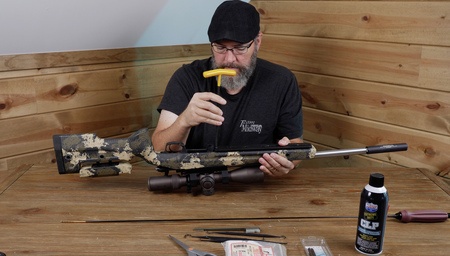
Carbon Buildup Removal
The next thing I do is to spray all the areas I intend to clean with the CLP carbon cleaner product. This will give those areas time to soak and will begin to break up and loosen the carbon.
Now I will begin to physically scrape and remove carbon build-up by using the nylon picks. If you are not familiar with these, just picture metal dental picks and make them more friendly with the softer nylon material. I will also use a nylon toothbrush to loosen and remove material from inside the action, the bolt body, bolt face, and the muzzle of the rifle.
Once every surface has been brushed/scraped and the carbon loosened, I use the CLP carbon cleaner again to remove the remaining dirty material from the surface of the metal. At this point I also use the canned air to make sure any small chunks of carbon or dirt are removed.
Barrel Cleaning
At this point, it’s time to clean the barrel. Ready your cleaning rod, jag, and patches. Insert a bore guide into the action. Spray a small amount of CLP cleaner onto the patch, and push the rod through the bore guide, down the barrel, and out through the muzzle of your rifle. Remove the dirty patch and then remove the cleaning rod from your barrel. You will need to repeat these steps over and over again, until the patches come out of the barrel clean. They may not come out perfectly clean but get as close as you can.
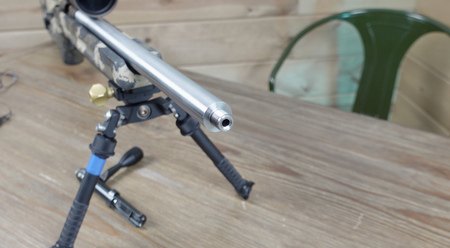
Note: Never push the cleaning rod through the barrel starting at the muzzle. Always and only from chamber to muzzle.
Wipe Down and Lubricate
The final steps are to wipe the surfaces down with a clean cloth, lubricate key areas according to your owner’s manual, and then reassemble your rifle. Congratulations you now have a clean and well maintained 22LR rimfire rifle – fit for service at the next NRL22 competition, squirrel hunt, or tin can plinking in the back yard.
Keeping Your Rimfire Guns Clean
There are a good number of ways to attack the problem of cleaning your 22LR. Ask five different people, and you’ll get get seven different opinions–all of which will probably be valid ways of getting the job done.
However, one thing rings steady and true.
Remember to clean your rimfire rifles more often than you clean your other centerfire guns. They really do need the extra scrubbing.
Recent Posts
December 15, 2025
December 15, 2025
December 12, 2025
December 12, 2025

